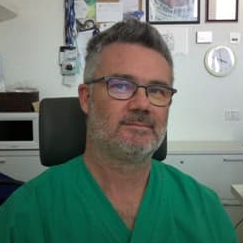Medication Related Osteonecrosis of the Jaw: What We Know
A special issue of International Journal of Environmental Research and Public Health (ISSN 1660-4601). This special issue belongs to the section "Health Care Sciences & Services".
Deadline for manuscript submissions: closed (31 January 2023) | Viewed by 9914
Special Issue Editors
Interests: MRONJ; oral surgery; maxillofacial surgery; reconstructive surgery; periodontitis; oral microbiome; diabetes and oral health; preventive and community dentistry; dental hygiene
Special Issues, Collections and Topics in MDPI journals
Interests: MRONJ; oral surgery; oral microbiome; periodontitis; diabetes; dental hygiene; oral pathology; microbiology
Interests: clinical dentistry; restorative dentistry; oral surgery; oral pathology; dental implantology
Special Issues, Collections and Topics in MDPI journals
Special Issue Information
Dear Colleagues,
Medication-related osteonecrosis of the jaw (MRONJ) is a side-effect of several drugs, often linked with antiresorptive agents in different therapies such as for cancer, osteopenia, and Paget disease. This condition involves different medical fields, from oncology and general medicine, to dentistry and maxillo-facial surgery. Nowadays, there are attempts to increase the knowledge about new molecules related to MRONJ in order to expand medical operators’ awareness, with the main goal being to prevent the onset of the problem. In light of this, articles addressing these topics are invited to this Special Issue. In addition, an appropriate treatment still remains unclear, and papers about personal own experience in all stages of the disease are recommended.
Prof. Dr. Marco Dolci
Dr. Silvia D’Agostino
Dr. Luisa Limongelli
Guest Editors
Manuscript Submission Information
Manuscripts should be submitted online at www.mdpi.com by registering and logging in to this website. Once you are registered, click here to go to the submission form. Manuscripts can be submitted until the deadline. All submissions that pass pre-check are peer-reviewed. Accepted papers will be published continuously in the journal (as soon as accepted) and will be listed together on the special issue website. Research articles, review articles as well as short communications are invited. For planned papers, a title and short abstract (about 100 words) can be sent to the Editorial Office for announcement on this website.
Submitted manuscripts should not have been published previously, nor be under consideration for publication elsewhere (except conference proceedings papers). All manuscripts are thoroughly refereed through a single-blind peer-review process. A guide for authors and other relevant information for submission of manuscripts is available on the Instructions for Authors page. International Journal of Environmental Research and Public Health is an international peer-reviewed open access monthly journal published by MDPI.
Please visit the Instructions for Authors page before submitting a manuscript. The Article Processing Charge (APC) for publication in this open access journal is 2500 CHF (Swiss Francs). Submitted papers should be well formatted and use good English. Authors may use MDPI's English editing service prior to publication or during author revisions.
Keywords
- MRONJ
- prevention
- oral surgery
- oral pathology
- cancer
- antiresorptive drugs
- monoclonal antibodies
Benefits of Publishing in a Special Issue
- Ease of navigation: Grouping papers by topic helps scholars navigate broad scope journals more efficiently.
- Greater discoverability: Special Issues support the reach and impact of scientific research. Articles in Special Issues are more discoverable and cited more frequently.
- Expansion of research network: Special Issues facilitate connections among authors, fostering scientific collaborations.
- External promotion: Articles in Special Issues are often promoted through the journal's social media, increasing their visibility.
- e-Book format: Special Issues with more than 10 articles can be published as dedicated e-books, ensuring wide and rapid dissemination.
Further information on MDPI's Special Issue polices can be found here.







